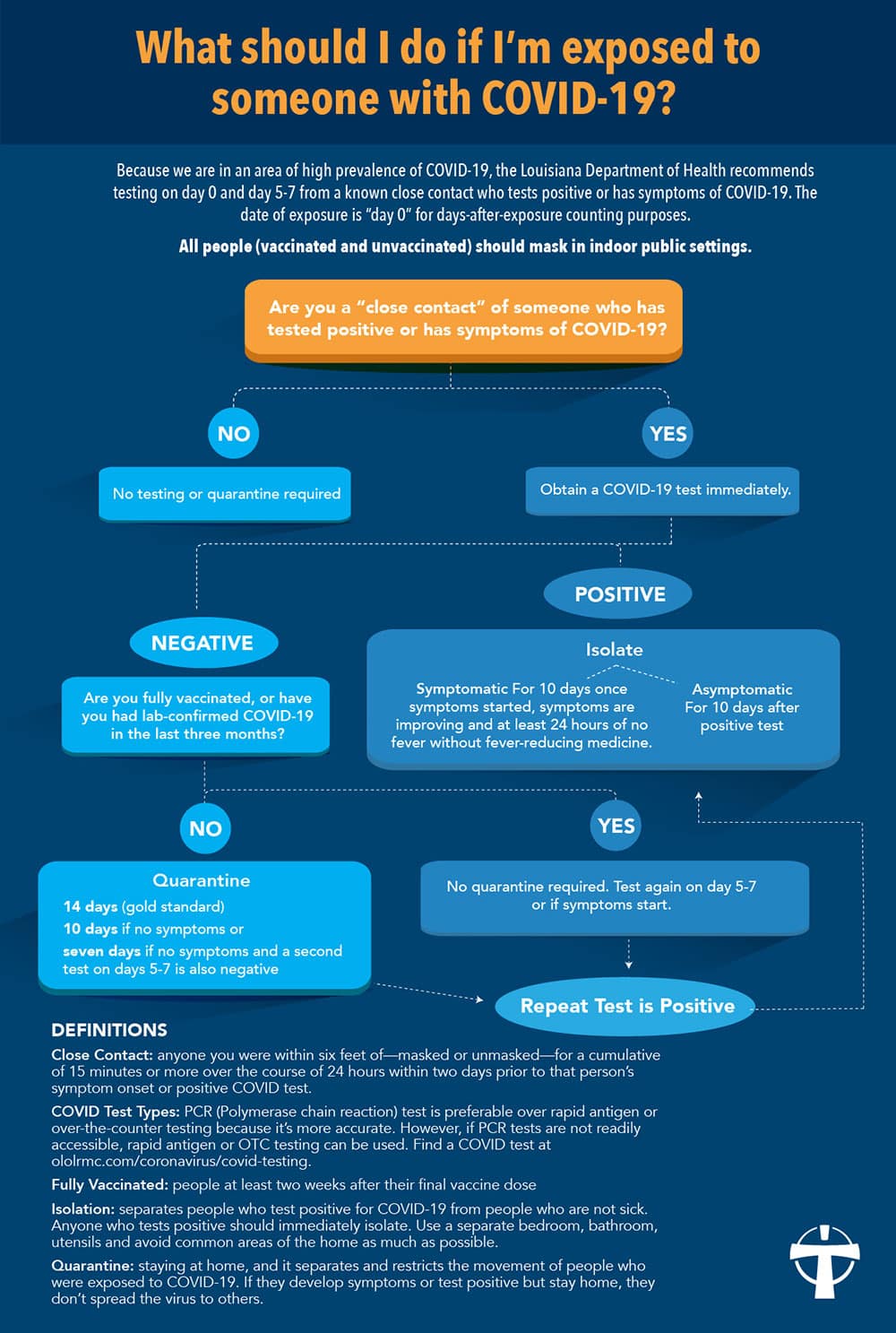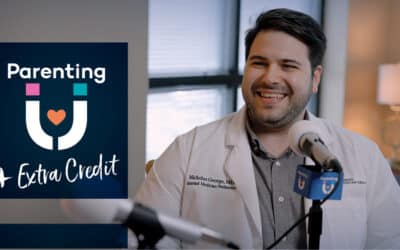Whether you receive the notice from a phone call, an email or printed letter in your kid’s backpack, no one wants to find out their child was exposed to COVID-19. It’s a reality all parents are likely to face at some point during this third pandemic school year. If your child has been exposed to someone with symptoms of or confirmed COVID-19, first DON’T PANIC.
While your child’s school and your workplace should provide specific guidelines for steps you should take before returning in person, wading through the rules can feel a bit like trudging through quicksand. With Dr. Katie Taylor, medical director of infection prevention at Our Lady of the Lake Regional Medical Center and assistant professor of clinical medicine at LSU, we’ve developed this guide to help you understand best practices and plan for what you should do if COVID-19 affects your family.
Who Needs to Quarantine?
Quarantine means staying at home, and it’s meant to separate and restrict the movement of people who were exposed to COVID-19. If they develop symptoms or test positive but stay home, they don’t spread the virus to others. The date of exposure is “day 0” for days-after-exposure counting purposes.
The Centers for Disease Control and Prevention (CDC) recommends that unvaccinated people, including children younger than 12, who have been exposed to COVID-19 quarantine, monitor for symptoms, practice social distancing and avoid public settings where close contact with others may occur including shopping centers, movie theaters, stadiums, workplaces and schools.
The Louisiana Department of Health and the CDC advise that fully vaccinated people do not need to quarantine following an exposure to COVID-19 unless they begin to experience symptoms or test positive.
When your unvaccinated child has been exposed to COVID-19, you have three basic options for quarantine:
- Option 1: Complete a 14-day quarantine (the gold standard and lowest risk of transmitting COVID-19)
- Option 2: If no symptoms appear within 10 days after exposure, your child may end their quarantine and return to school, masking through at least day 14 after exposure
- Option 3: If no symptoms appear within 7 days after exposure and your child has received a negative COVID-19 test result (PCR/molecular or antigen) collected from day 5 or later after exposure, your child may end their quarantine and return to school, masking through at least day 14 after exposure
Who Needs to Isolate?
Isolation separates people who test positive for COVID-19 from people who are not sick. Anyone who tests positive should immediately isolate. Depending on their age, a child who tests positive for COVID-19 may not be able to isolate from their caregiver. If your child tests positive, they should stay home and isolate as much as they can for:
If symptomatic, at least 10 days since symptoms first appeared, symptoms are improving and at least 24 hours with no fever without fever-reducing medication
If asymptomatic but with a positive test, 10 days from the time the test sample was collected
What About Siblings?
If your child is quarantined at home because of an exposure but doesn’t have symptoms or a positive test result, their siblings do not need to quarantine and can continue to attend school. Quarantine for any siblings would start if the first child who was exposed to COVID-19 starts having symptoms or tests positive. If that child tests positive for COVID-19, their siblings would then follow the same quarantine guidelines as outlined above.





